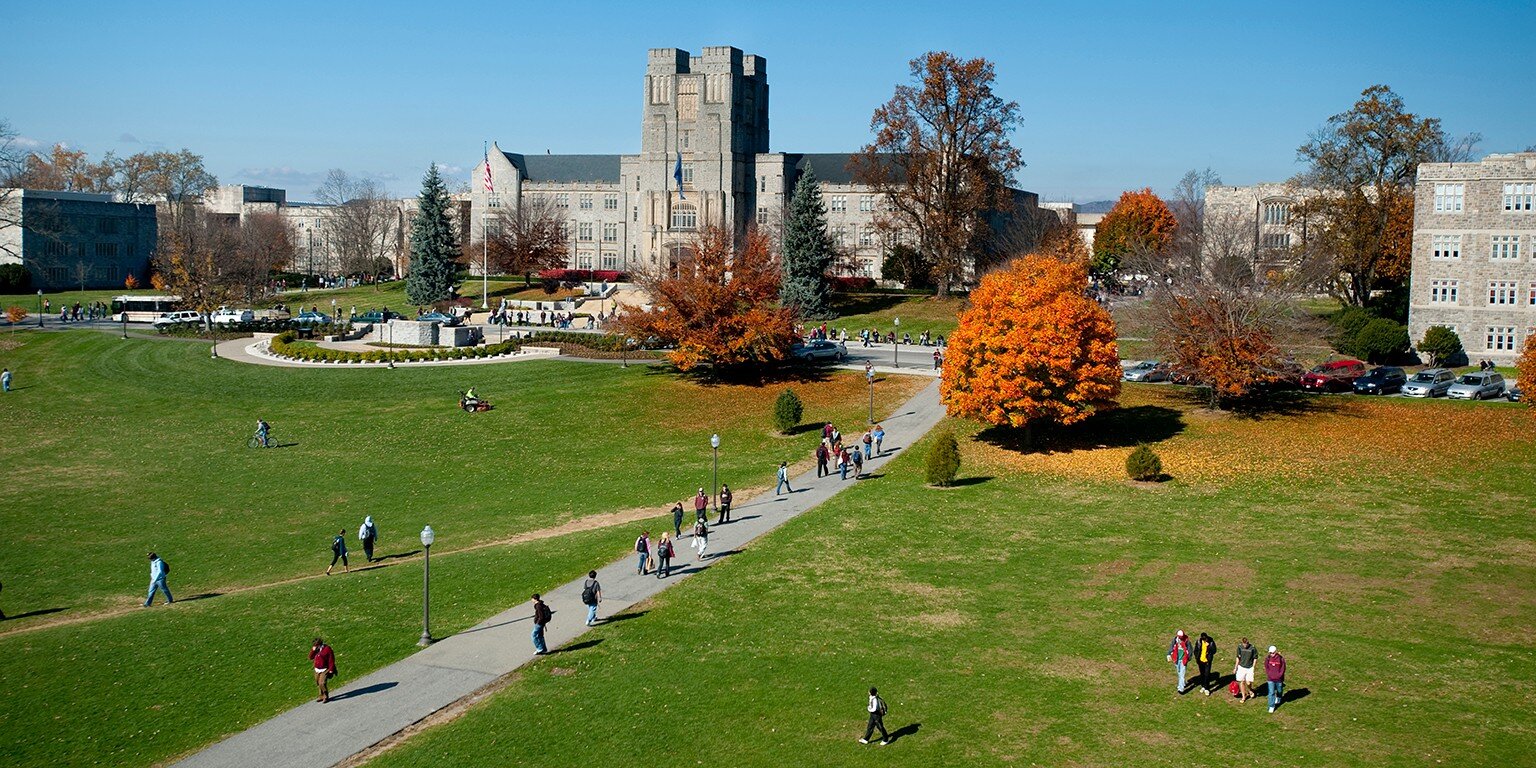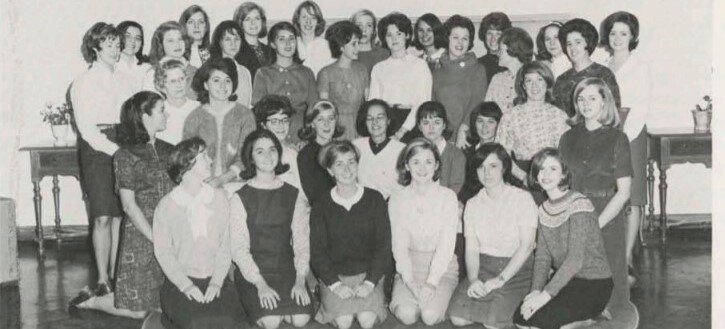
EXHIBIT
FINDING
A WOMAN'S PLACE AT VIRGINIA TECH 1921-2021
A SPACE OF THEIR OWN—HILLCREST HALL
From personal recollections and interviews, Hillcrest seems to have impacted the lives of its female residents in three ways: through food, creating a community and the reinforcement of lady-like behavior.
Women ate separately from men until 1963 when one of the male dining halls opened to female students. Meals in the dining room at Hillcrest were quite the affair. Elizabeth Lamb Aydlett ‘46 recalled the “wonderful meals” served at Hillcrest. Dorothy Herndon ’60, ‘62 described coming together each evening at 5:30 to eat at tables with white table cloths. She noted that Hillcrest used the same China as the Hotel Roanoke giving the dining experience a touch of elegance. Hillcrest had its own kitchen staff to prepare meals for the female residents. Evening meals were one way that women at Hillcrest built and maintained a sense of community.
Women at Hillcrest banded together to “fight off” male invaders during panty raids of the 1960s. Dorothy Herdon recounted:
The women of Hillcrest also came together in 1959 to watch Patricia Ann Miller become the first woman to receive a commission at Virginia Tech. Although she was denied access to classes taken by the cadets, Miller applied for and was granted a commission with the Army Women's Medical Specialist Corps. Dr. Laura Jane Harper noted that the women of Hillcrest were furious when Miller’s commission came at the very end of the ceremony. When Dr. Harper was asked why Miller was the last to be recognized, Harper replied, “Those men must get a head start on her; even with that she will overtake them.”
Students living at Hillcrest were expected to act like ladies. The women of Hillcrest had a curfew of 10 pm on weeknight and 11 pm on weekends. Female students were required to sign and provide a destination when they left the residence. Women leaving campus for the weekend needed a note from their parents. Well into the 1960s, the women of Hillcrest lined up for dress inspection before leaving for class. Women were not allowed to wear pants on campus until 1968. Several female students recalled that during snow storms, the housemother would call the office of the president and request permission for co-eds to wear slacks on campus. However, this request was rarely granted.

























